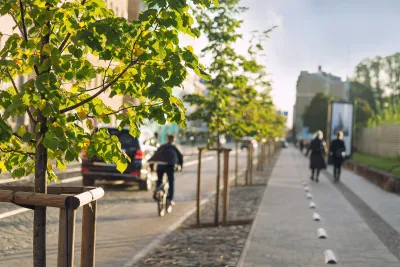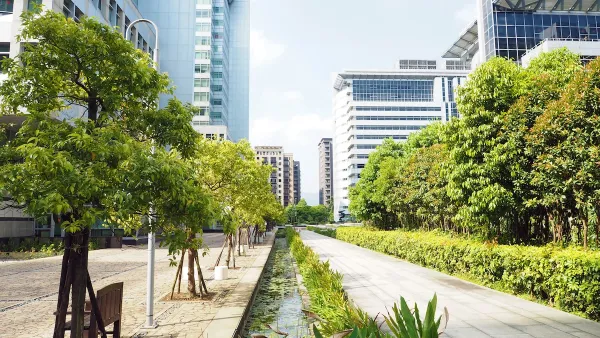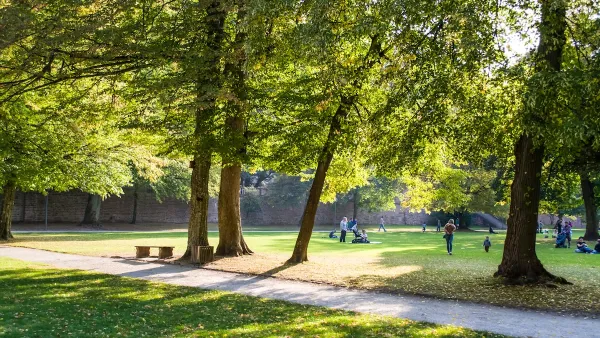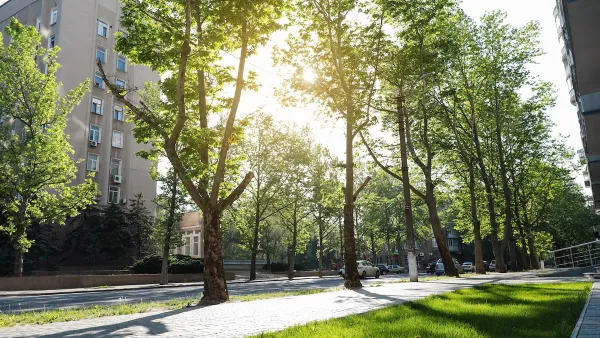Recently, the U.S. Forest Service awarded over $1 billion in competitive grants to expand equitable access to trees and their benefits. Grantees include Los Angeles County and TreePeople, who are working to plant trees where they are most needed.

Made up of trees on public and private lands, the community or urban forest is essential to a healthy, thriving, and resilient community. When spread equitably and supported by other urban greening measures, a well-managed urban forest can deliver a wide range of benefits such as healthier soil, increased biodiversity, new wildlife habitats, shading from heat, and greater community health and well-being.
Through funding from the Inflation Reduction Act, the U.S. Forest Service is making historic investments in boosting the tree canopy in urban, suburban, and rural communities nationwide. The agency has selected 385 grant proposals from entities working to increase equitable access to trees and green spaces and the many benefits they offer.
In this article from the USFS, Andrew Avitt highlights two complementary efforts to expand the community or urban forest in Southern California:
- Early Action Implementation for LA County Community Forest Management Plan:
The project addresses the tree canopy deficit within disadvantaged communities in the unincorporated areas of the county by assessing areas of low canopy coverage, planting diverse tree species, and creating workforce development opportunities for the continued maintenance and monitoring of new and existing trees. - From Redlining to Greenlining: Planting Justice in SoCal: This project involves planting trees on public and private property trees across communities to maximize environmental benefits such as extreme heat mitigation. This project uses tree planting as a vehicle to engage and empower over 25,000 people in ownership of their urban forest through engagement, education, workforce development, and collaboration.
To learn more about these efforts, please read the source article.
FULL STORY: Urban Forestry: From Redlining to Green Lining

National Parks Layoffs Will Cause Communities to Lose Billions
Thousands of essential park workers were laid off this week, just before the busy spring break season.

Retro-silient?: America’s First “Eco-burb,” The Woodlands Turns 50
A master-planned community north of Houston offers lessons on green infrastructure and resilient design, but falls short of its founder’s lofty affordability and walkability goals.

Delivering for America Plan Will Downgrade Mail Service in at Least 49.5 Percent of Zip Codes
Republican and Democrat lawmakers criticize the plan for its disproportionate negative impact on rural communities.

Test News Post 1
This is a summary

Test News Headline 46
Test for the image on the front page.

Balancing Bombs and Butterflies: How the National Guard Protects a Rare Species
The National Guard at Fort Indiantown Gap uses GIS technology and land management strategies to balance military training with conservation efforts, ensuring the survival of the rare eastern regal fritillary butterfly.
Urban Design for Planners 1: Software Tools
This six-course series explores essential urban design concepts using open source software and equips planners with the tools they need to participate fully in the urban design process.
Planning for Universal Design
Learn the tools for implementing Universal Design in planning regulations.
EMC Planning Group, Inc.
Planetizen
Planetizen
Mpact (formerly Rail~Volution)
Great Falls Development Authority, Inc.
HUDs Office of Policy Development and Research
NYU Wagner Graduate School of Public Service





























